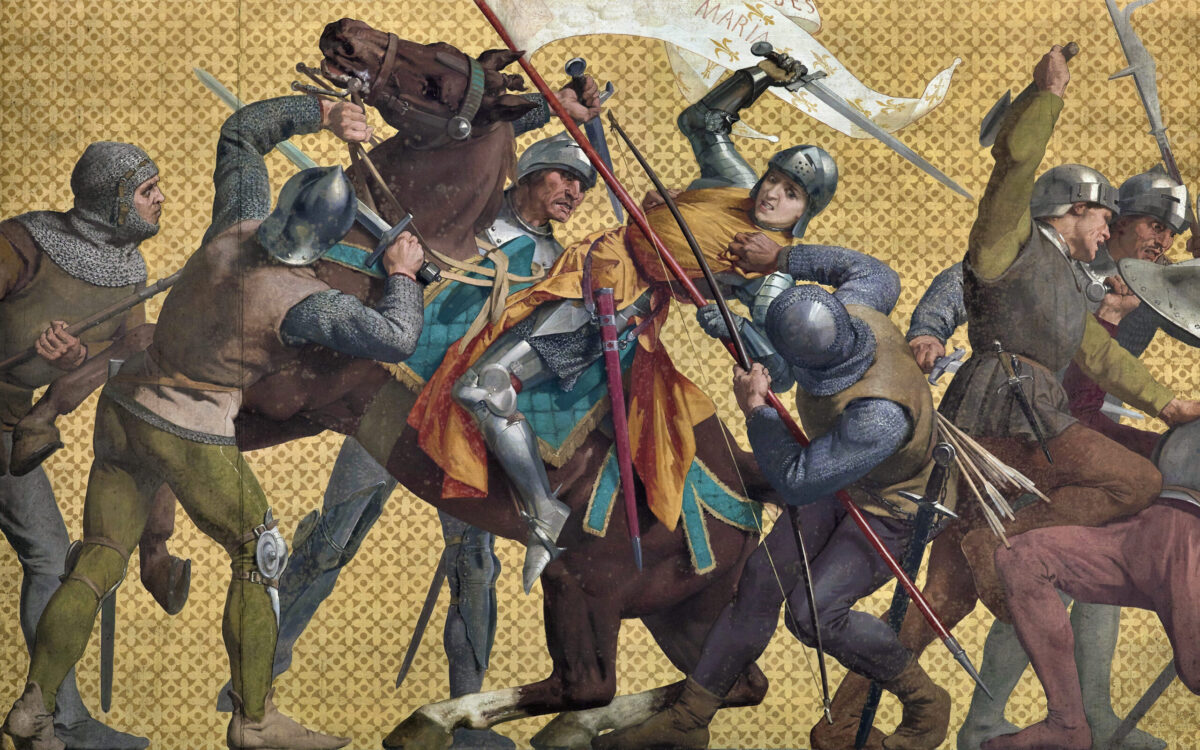Our next issue of MHQ will feature an article on the life and legend of Sir John Fastolf, the inspiration for William Shakespeare’s disreputable but popular knight character Sir John Falstaff. Entwined with Fastolf’s story is the history of one of the most dramatic figures of European military history: Joan of Arc.
Joan of Arc, an uneducated peasant girl born circa 1412, played an instrumental role in the coronation of Charles VII of France during The Hundred Years’ War and in securing the sovereignty of the French nation from English rule through firm decision-making and actions on the battlefield. Joan declared she had received visions and was acting based on communications with heavenly spirits; she would ultimately choose to die rather than recant her belief in her contact with these spirits. Joan’s religious convictions made her a subject of much debate during her lifetime and even up to the present day.
What is known for sure about Joan is that she was a truly remarkable military leader who made accomplishments that were virtually unthinkable for most women in medieval Europe. The world of medieval warfare was dirtier and more savage than most people today can imagine. Weapons were brutal, and soldiers had to adapt to living in filthy conditions. Women derived most of their status from their husbands; noble ladies were viewed as the pretty objects of courtly love, and peasant women had to work, while all were expected to lead a domestic existence removed from power and certainly from violence. Women were not assumed — nor desired — to become warriors or command men on the battlefield. Nevertheless, Joan, an unmarried teenage girl with no political connections to speak of, defied every social, cultural and physical obstacle to succeed at doing just that. Indeed, English forces squaring off against Joan on the battlefield were so alarmed by her persona and by the defeats they suffered at her hands that they became convinced that she was a witch.
Joan’s determined decisions brought France a string of unexpected victories—and those victories would not have been possible had she not won over the hearts of French troops. Medieval warfare shows us that religious conviction alone is not enough to guarantee success or faith in leadership. Joan had the power of a strong command personality. While some romanticized paintings tend to depict her politely standing alone holding her banner, the reality is that Joan preferred to be in the thick of bloody action in her crusade to expel the English from France. She rallied French troops from the front, inspiring them to persevere and turning the tide more than once; she gave orders and was wounded in battle several times. The fact that Joan not only earned the respect of battle-hardened medieval warriors but commanded their obedience and successfully directed them in the chaos of battle is astonishing.
Nowhere does this struggle come more visually alive than in this mural image from the Pantheon in Paris. In it, we see the slender figure of Joan, wearing her plate armor and wielding her sword and banner, being wrested off her horse by enemy combatants. What stands out in this image is the stark contrast of Joan, the lone female who is obviously less physically robust than her opponents, struggling fiercely. This power imbalance is what makes Joan stand out as a remarkable person. In a ferocious and brutal world of warfare where other women would literally have been crushed by physically and politically stronger forces, Joan was able to strive and thrive. This image shows the moment of Joan’s military defeat but also the courageous genius that makes her a war leader worth remembering.





